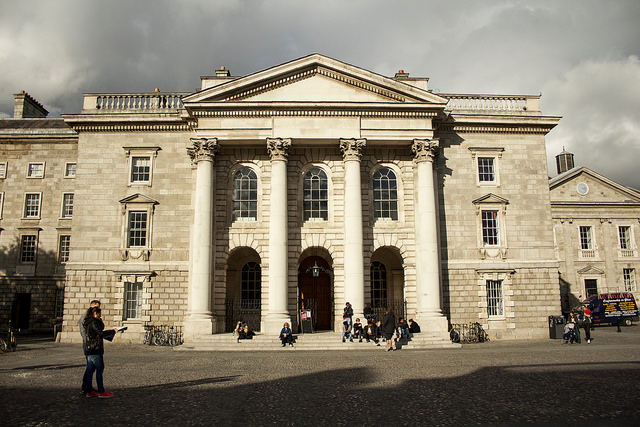Universities and colleges will be permitted to relax the two-metre socialdistancing rule to one metre when in lectures or classes, the government announced today.
In guidelines for higher-education institutions published today, the government said that while the two-metre rule should be maintained “under all circumstances possible”, there will be instances where “teaching cannot be delivered while maintaining 2m distance between students”.
“Under such circumstances”, the guidelines said, “the distance between student seats or workstations may be reduced to (but not less than) 1m”.
Staff are advised to wear face shields, visors or other protective equipment – provided by the universities – if the social distancing rule is relaxed.
The government also recommends “the use of cloth face coverings in indoor settings where adequate physical distance cannot be maintained”.
In order to prevent students congregating in large numbers before lectures, class times may be shortened to 40 minutes of an hour-long timeslot, with the remaining 20 minutes for entering and exiting classrooms.
The guidelines noted, however, that preventing congregations outside classrooms “is likely to be quite challenging.”
“High-contact surfaces” in teaching spaces such as computer keyboards should be cleaned after a class, but there is “no requirement for the room / theatre to be left vacant for a specific period once cleaned”.
Colleges will also be required to “the greatest extent possible” record attendance at events and retain records for four weeks in order to allow for contact tracing.
Lecturers will not be required to wear face coverings while teaching provided they can maintain “a safe distance from the student body”. Furthermore, teaching staff who are “very high risk” will not be required to teach students face-to-face, and higher education institutions should “facilitate such staff to work remotely, including offering teaching and learning online, where this is necessary”.
Lecturers living in the same household as individuals in the high-risk category will be “risk assessed on a case-by-case basis with appropriate measures implemented accordingly”.
The government is also recommending that if universities decide to discourage students suspected of having coronavirus from returning to their residence, they should provide an “alternative residential space”.
Universities have also been told to set aside a space for students to wait to be collected and taken to live off campus if they develop symptoms while on college premises.
The government has also said that “students should not visit buildings other than the one where they live and should not invite guests to the residences”, adding that “students who are not residents in HEI accommodation should not access the buildings”.
Colleges will generally be subject to the parameters of the Return to Work Protocol and public health guidance.
In a press statement, the Irish Universities Association said that colleges in Ireland have “unanimously welcomed” the guidelines.
“The over-riding objective is to ensure the safe return of all staff and students to on-campus activity this autumn”, it added.
“The publication of the Guidelines by the Minister follows consultation with staff union representatives under the aegis of the Irish Congress of Trade Unions.”
“Individual HEIs will now work to finalise their plans for the next academic year based on these Guidelines and in collaboration with local staff and student representatives.”
University College Dublin President Andrew Deeks said on Twitter that he welcomed “the clarity in the public health guidelines for higher education, which is in line with our expectations and planning”.
Update: 19:12, August 5th, 2020
This piece has been updated to reflect the fact that the government recommends that staff and students wear cloth face coverings where normal social distancing cannot be adhered to.







